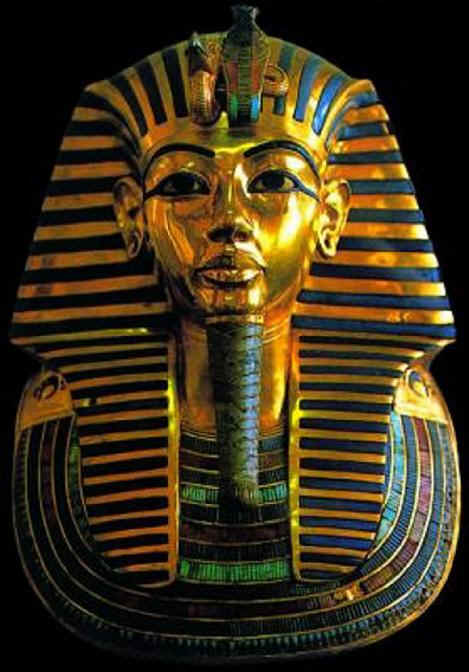-
Sylvhia.
User deleted
Mummification in Ancient Egypt
Many ancient peoples used mummification to preserve the dead's bodies but it is in Egypt that more complex technique evolved and allowed the ancient bodies to arrive to us and giving us the possibility to obtain important information on this wonderful civilization.
The ancient Egyptians believed that the soul survives after death, that could only happen if the body had remained intact.
The first mummified bodies of Ancient Egypt date back to pre-dynastic period when the dead were deposited, collected in the fetal position, in shallow graves. The dry dry and very hot climate allowed the natural mummification of bodies.
It is unclear, however, if during this period the cult of the dead was already a common practice.
Then began the burial in tombs with artificial coverings. The deceased was wrapped in bandages on what then poured with plaster that was modeled on the shape of the body with emphasis on the facial features, and then, once dry, painted.
The mummification process progressed, reaching the best results in the period known as the New Kingdom, the period that includes the XVIII, XIX and XX dynasty.
At first the mummmificazione was reserved only for pharaohs, then gradually spread to all those who could afford to pay the cost, there are documents proving that it was possible to take a deduction from wages to pay for the burial. (Sethi I)
(Sethi I)
The task of preparing the body to keep it intact for eternity was entrusted to the embalmers, who combined the knowledge of human anatomy and chemistry in religious rituals, they had to act quickly to prevent the corpse began to decompose due to the warm climate of Egypt .
They were specialists working in laboratories specially equipped, close to the Nile or one of its channels (for different washes that the body suffered during the various phases of the work). The completion of the embalming process took about 70 days, a fact that also allowed to complete the tomb of the deceased.
The first step of the process consisted in the removal the internal organs from the body, the presence of which could speed up the process of putrefaction. The brain was removed from the skull through metal hooks inserted through the nostrils. Lungs, stomach and intestines were removed through an incision on the abdomen. The only organ that was not removed was the heart that was considered the seat of the soul.
The internal organs removed were stored in special vessels, called Canopic Jars, so called from Canopus, a city on the delta of the Nile, with the features of the four sons of Horus. These pots were placed in the grave during the funeral rites and delivered by the deceased to the new eternal life. According to the scriptures, the heart was then weighed on a scale from Anubis, comparing it with a feather, the symbol of "lightness of the soul," then justice. If the feather had been more heavy of heart, would guarantee eternal life to the possessor. Otherwise, these were fed hybrid Ammit being called the "Devourer". Being the heart symbol of life, this act represented the eternal death of the individual
In the Late Period the internal organs underwent the process of mummification with bandages and wrapping cloth before being reintroduced into the abdomen but the canopic jars, though now devoid of practical utility, continued to be deposited in tombs.
After the removal of the organs, the next step was to proceed to the dehydration of the body, by immersing it in natron, a salt of sodium, existing in nature which deposited in the puddles of flooding of the Nile after their drying, for a period of about 40 days
The emptied body was then washed with palm wine, that thanks to its high rate of alcohol prevented the growth of spoilage bacteria.
After this operation bandages impregnated with natron, pieces of linen and sawdust were introduced into the abdomen. The body was then covered with the same salt and then anointed with special oils, balsamic (resins of conifers and other plants, beeswax, scented oils, etc..).
At the end of this phase, the corpse it appeared completely dehydrated but still recognizable. The abdominal incision was then covered with a metal plate called the Eye of Horus.
At the end of these operations, the body was tightly wrapped with strips of linen often impregnated with resin; this step was very important both for a long duration, both for a good presentation of the body.
On canvas bandages were reported spells whose purpose is to protect the body and between the various layers of the bandage various amulets related to the life, as the Ankh, beetles and the Djed pillar, were inserted .
At the mummification followed the funeral with the arrangement of the body in the grave. The ceremonies, and the grave, varied according to social status of the deceased, from simple burials in the sands of the desert burials in graves richly decorated and equipped with precious funerary objects.
An example of this was found in the tomb of Tutankhamun, a ruler of the Eighteenth Dynasty, which comes to us virtually intact.
*Attention please* - - "This translation (and / or content) is made by Sylvhia exclusively for "I Nove Mondi Forum". In case of partial or full release is mandatory to link to the original source and the required credits".
www.anticoegitto.net/mummificazione.htm
http://it.wikipedia.org/wiki/Mummificazione.
Mummification in Ancient Egypt01 Ottobre 2014 |


